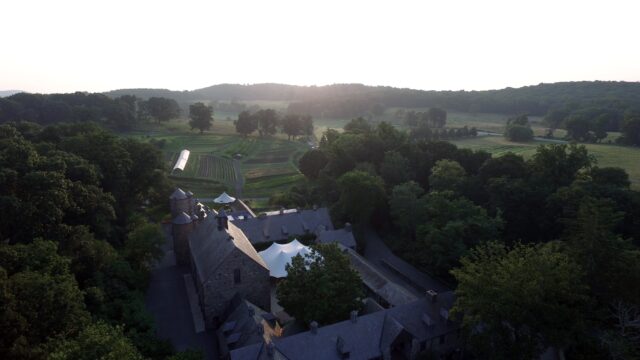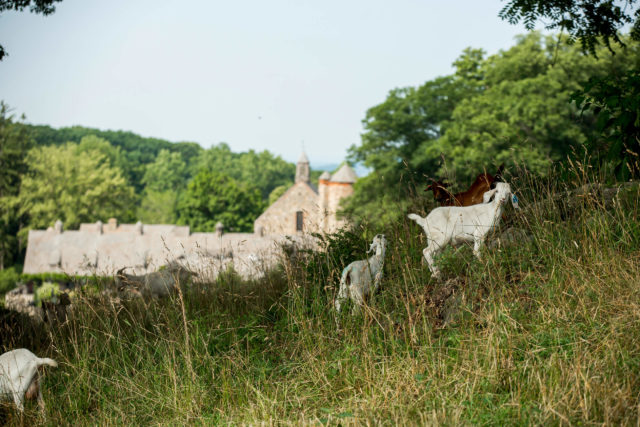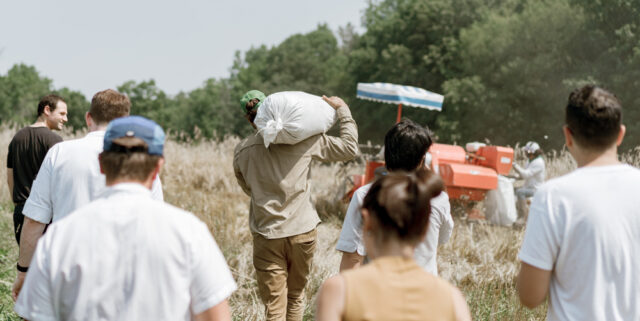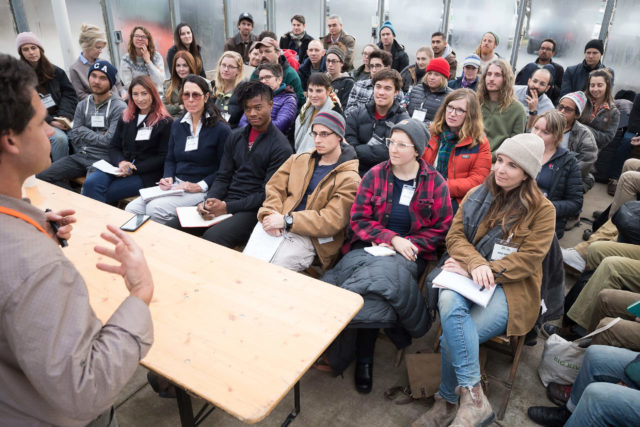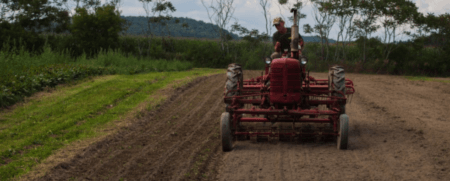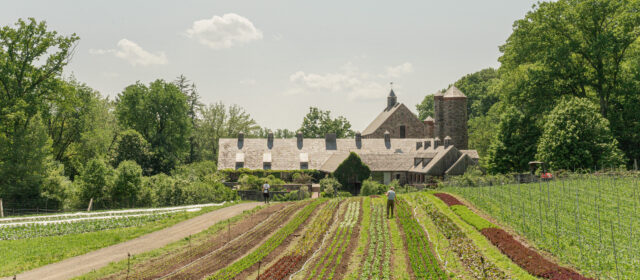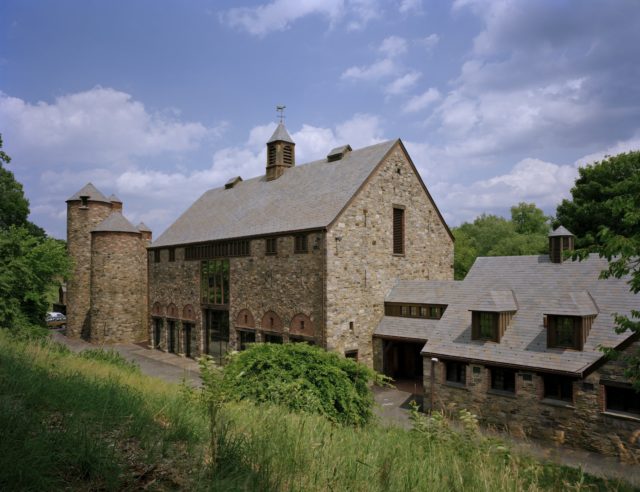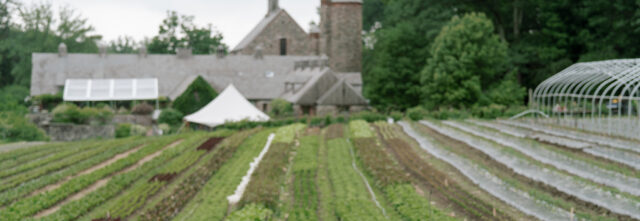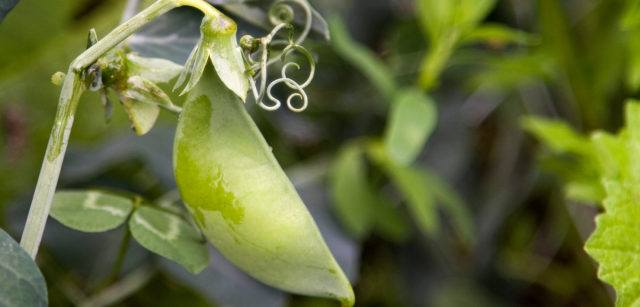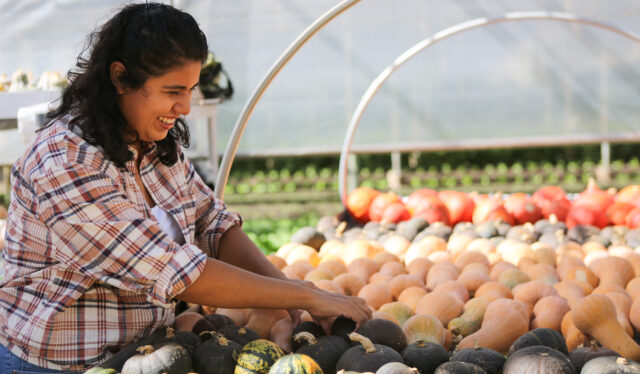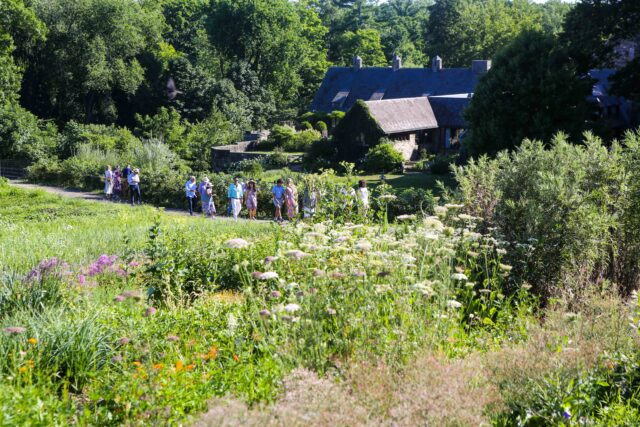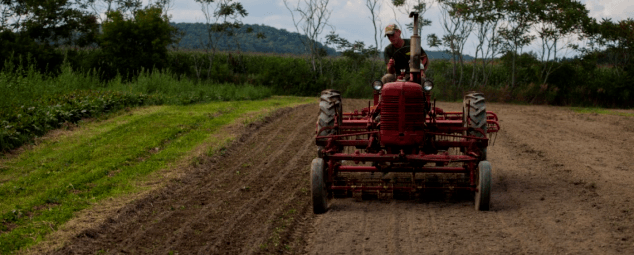Kilpatrick Family Farm
Michael Kilpatrick
Middle Granville, NY
Note: You’ll notice this case study is in the past tense. After the 2015 season, Michael moved to the Midwest, where he continues to work as a speaker and farm consultant.
SNAPSHOT QUESTIONS
Where was your farm?
Kilpatrick Family Farm was located in Middle Granville, NY, around 1.5 hours North of Albany, NY, in zone 4a.
What was your soil type and topography?
We had a mix of rocky upland soils and beautiful river bottom. All soils were relatively sandy or silty, and we had very limited clay ground. At our home farm, we had some significant 10-12% south facing slopes, which allowed us to get on the ground up to a week earlier than our river bottom soils. Unfortunately we were very water limited there, although we had 3 wells and used predominantly drip irrigation. Our bottom ground had a 4-foot water table as well as river access for pumping.
Did you lease, rent or own your land?
Our farm was based on my parents’ 8 acres. That is where we had all our greenhouses, storage, farm shop, and packing facility. In addition, we rented 4 to 6 additional parcels in the area, for a total of 500 acres. Several were cash leases, paying a set amount per year for use of the land. One was supplying a CSA for the manufacturing plant that owned the property. Several properties we were just giving the owner the farm tax exemption for their land. We tried to get a 5 year rolling lease on the property that was annually renewed, giving us the best protection compared to a conventional lease.
What were your markets?
Our markets were 4 farmers markets (3 year-round) for 40% of our income, a 200-250 member CSA which was another 40%, and wholesale to co-ops, other CSAs and restaurants, which made up 20% of our income. Our distribution area was mainly Glens Falls, Saratoga, and Albany, NY.
IN-DEPTH QUESTIONS
What made you want to start your farm? What was your dream?
It began as a way to feed our family and make some spending money. It quickly turned into a passion, and a vision to change the way our community sees and eats food. Part of it was proving the critics wrong who told us that you can’t make money farming. Part of it was an experiment into building a profitable, sustainable business for our family to work in.
How were you involved in farming before you started your own farm?
We gardened extensively as we were growing up (my crops were carrots and cukes, my brother grew corn), read books on agriculture and then just dove in. The first year we farmed, we traded a Goldini rototiller for 1 day a week and worked on another vegetable farm, kind of like a mini-apprenticeship.
How did you secure land and capital for your farm?
The first year, our dad gave us a $5,000 loan which we paid back that fall. He also let us use his land. After that, the farm supported itself. Granted, we lived at home in the early years so much of the profit was plowed back into the business. Several of our tractors were purchased with 0% financing through John Deere. We also customer-funded some equipment as well. We paid 4% interest on $1,000 or more investments in the farm.
What problems did you run into in the planning stages?
We were too stupid (or smart) to spend a whole bunch of time planning, we just went out and built a farm. One problem we had was that we grew so rapidly that we didn’t have the business or leadership expertise to manage a crew well and made some management decisions that hurt us. Another was not bringing adequate power and water to our site the first time. I believe the biggest mistake we made though was not building the business as if we were going to franchise or sell it. This means creating SOP manuals, documentation, not mixing personal purchases with business, laying it out for growth, etc.
What did your farm look like in year one?
A postage stamp. We had a rototiller and strong backs! We did have a small hoophouse which we filled with cucumbers, tomatoes, and melons. We planted about a ¼ acre and didn’t understand succession planting very well, we only planted lettuce 3 times.
What were some challenges that you didn’t expect to have and how did you deal with them?
Water was always a big deal in the early years. We ended up putting in additional wells and digging sinks in the floodplain to store water for the dry seasons. Managing people is always hard and something I struggled with. I hate to micro-manage, and unfortunately I hired a few people into management who needed to be micromanaged. Another weak point was finding the right tools and equipment as we scaled up. So we ended up building a few of our own tools.
What were some indicators in the beginning stages that made you optimistic for your farm’s success?
The first time we broke $1,000 in sales at a farmers market I thought “we can really do this.” Surprisingly, this was in our first year! Seeing our customers ecstatic about our clean, fresh produce was always exciting. Getting into some quality farmers markets the first year was exciting and really helped the bottom line.
Was there a point when you felt your farm became “established?”
I would say that would have been around year 6 or 7. We had started adding the necessary equipment to make the farm function smoothly and our cash flow became better. This is when we had a true second tier of management, a transplant manager, a packhouse and harvest manager, a field manager. Of course the size of our farm was a bit bigger, so we needed all those roles. Malcolm Gladwell talks about accumulating the 10,000 hours in a job to become an expert at something. I think also about that time we were getting there. Obviously we had multiple “jobs” in farming but we started to really get a flow or rhythm to what we did and it seemed to just work.
How have your goals changed?
As the farm matured, it went from how do I grow a carrot to how do I grow a better carrot for a lower price and sell more of them. Now that our soils are maturing, how do we manage cover crops with a vegetable rotation to build the soil. How do we present ourselves professionally, while still maintaining that hometown, small business charm? Since I have stopped actively farming and am now consulting in the industry, and working on acquiring different skills, the goals have changed a lot. I am now focused on helping farms become effective and sustainable businesses (read: make money), winter farming and season extension, and farm tool development.
How have you been successful? (financial, production, quality of life, etc.)
We never had an off-farm job to stay afloat, the farm paid all the bills and a salary. Our gross profit margin was around 20%. Our yields usually beat the published average yields, up to 45,000 lbs per acre for carrots, etc. We were able to hire good people and keep them, which meant we were able to pay them well enough that they stayed the long-term. We always took off one day a week for downtime as well as attended conferences.
Who or what can you credit for your successes?
Major influences would have been Paul and Sandy Arnold at Pleasant Valley Farm. We also read and listened (thanks Audible) voraciously, (mainly business, marketing, personal development) and worked to run the farm as a business. Our time was spent working on the farm not in the farm. (Read “The E-myth Revisited.”) We worked to market our farm, did customer surveys, and weren’t afraid to ask questions. In short, the farm was not our hobby, but a business that people relied on to pay their bills, and we had to run it at a level that ensured that they could do that. The Vermont Vegetable and Berry listserve has also been invaluable for information.
What challenges does your farm face now and in the future?
The push by conventional food companies to hijack the organic and buy local movement. From multi-national corporations to CSA look-alike aggregators, we are losing market shares. The adoption of shallow organic techniques because organic ag is so profitable. We use chicken manure as a fertilizer mainly because it is cheap and works well, but I don’t like how it leaves the soil after several years. With the weather getting more and more erratic, causing floods, drought, and unusual movement of bugs and disease, it has made farming harder and harder each year.
Where do you see your farm in five years?
I see us having started a new farm in 5 years, focusing this time on how much money we can make on an acre. I think that it could easily be over $200k if we focus on the right crops in the right area of the country. I would also like to continue innovating techniques and tools for the small farm.
What advice would you give to beginning farmers?
Start small and cashflow your growth. Many times I see farmers feel that they need to add a acre to pay the bills when all they need to do is sharpen their pencil and tighten up management. Take one day off a week and go swimming, hang out with friends, or just relax. I promise you will get more done in the remaining 6 days. Spend money on quality tools and machinery. Tools like a barrel washer and root undercutter will pay for themselves in months, not years. Soak up information like a sponge, visit other farms, invest in mentoring, read or listen to podcasts. Don’t give up!
—
Michael Kilpatrick’s blog includes lots of technical details about Kilpatrick Family Farm:
Originally published on March 14, 2016



